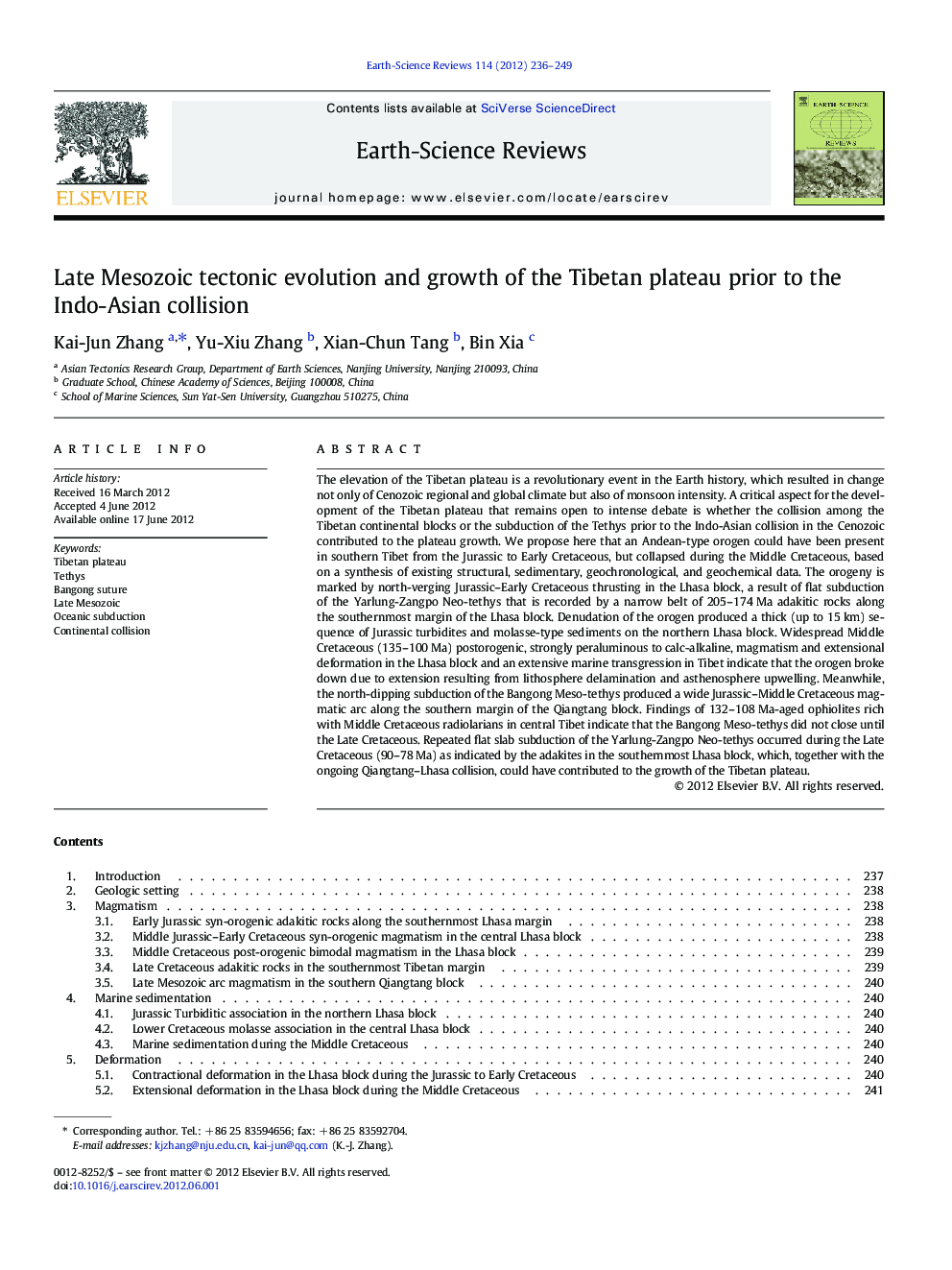| کد مقاله | کد نشریه | سال انتشار | مقاله انگلیسی | نسخه تمام متن |
|---|---|---|---|---|
| 4725937 | 1639988 | 2012 | 14 صفحه PDF | دانلود رایگان |

The elevation of the Tibetan plateau is a revolutionary event in the Earth history, which resulted in change not only of Cenozoic regional and global climate but also of monsoon intensity. A critical aspect for the development of the Tibetan plateau that remains open to intense debate is whether the collision among the Tibetan continental blocks or the subduction of the Tethys prior to the Indo-Asian collision in the Cenozoic contributed to the plateau growth. We propose here that an Andean-type orogen could have been present in southern Tibet from the Jurassic to Early Cretaceous, but collapsed during the Middle Cretaceous, based on a synthesis of existing structural, sedimentary, geochronological, and geochemical data. The orogeny is marked by north-verging Jurassic–Early Cretaceous thrusting in the Lhasa block, a result of flat subduction of the Yarlung-Zangpo Neo-tethys that is recorded by a narrow belt of 205–174 Ma adakitic rocks along the southernmost margin of the Lhasa block. Denudation of the orogen produced a thick (up to 15 km) sequence of Jurassic turbidites and molasse-type sediments on the northern Lhasa block. Widespread Middle Cretaceous (135–100 Ma) postorogenic, strongly peraluminous to calc-alkaline, magmatism and extensional deformation in the Lhasa block and an extensive marine transgression in Tibet indicate that the orogen broke down due to extension resulting from lithosphere delamination and asthenosphere upwelling. Meanwhile, the north-dipping subduction of the Bangong Meso-tethys produced a wide Jurassic–Middle Cretaceous magmatic arc along the southern margin of the Qiangtang block. Findings of 132–108 Ma-aged ophiolites rich with Middle Cretaceous radiolarians in central Tibet indicate that the Bangong Meso-tethys did not close until the Late Cretaceous. Repeated flat slab subduction of the Yarlung-Zangpo Neo-tethys occurred during the Late Cretaceous (90–78 Ma) as indicated by the adakites in the southernmost Lhasa block, which, together with the ongoing Qiangtang–Lhasa collision, could have contributed to the growth of the Tibetan plateau.
Journal: Earth-Science Reviews - Volume 114, Issues 3–4, September 2012, Pages 236–249